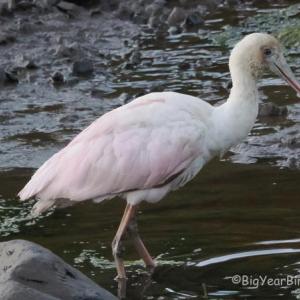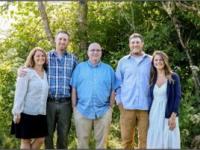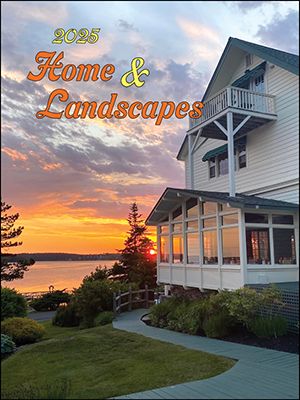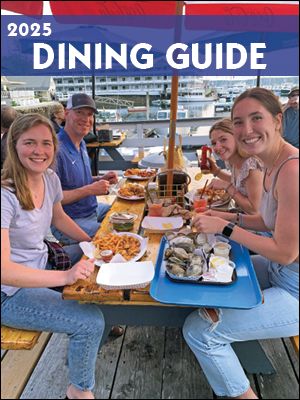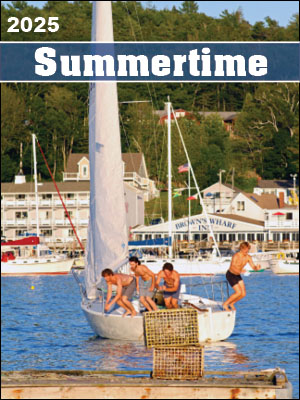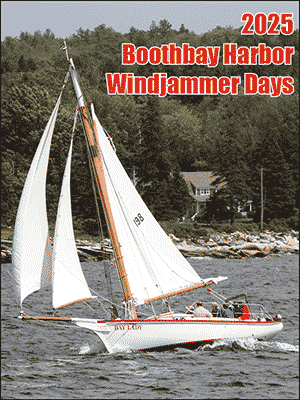North and South Meet in Downeast Maine as Birds
 Pink birds don't occur in Maine often, but as of this writing, a roseate spoonbill is making a showing in Cutler, in Downeast Maine, about 1,200 miles from its breeding grounds in South Florida and along the Gulf Coast of Texas to western Louisiana. Courtesy of Ethan Whitaker
Pink birds don't occur in Maine often, but as of this writing, a roseate spoonbill is making a showing in Cutler, in Downeast Maine, about 1,200 miles from its breeding grounds in South Florida and along the Gulf Coast of Texas to western Louisiana. Courtesy of Ethan Whitaker
 Common ringed plovers nests across northern Europe and Asia, with a few nesting on Baffin Island, squarely in the Canadian Arctic. Yet one recently made an appearance in Addison, Maine, in Downeast Maine—like the roseate spoonbill, about 1,200 miles out of range but in the opposite direction! Courtesy of Tom Aversa
Common ringed plovers nests across northern Europe and Asia, with a few nesting on Baffin Island, squarely in the Canadian Arctic. Yet one recently made an appearance in Addison, Maine, in Downeast Maine—like the roseate spoonbill, about 1,200 miles out of range but in the opposite direction! Courtesy of Tom Aversa
 Pink birds don't occur in Maine often, but as of this writing, a roseate spoonbill is making a showing in Cutler, in Downeast Maine, about 1,200 miles from its breeding grounds in South Florida and along the Gulf Coast of Texas to western Louisiana. Courtesy of Ethan Whitaker
Pink birds don't occur in Maine often, but as of this writing, a roseate spoonbill is making a showing in Cutler, in Downeast Maine, about 1,200 miles from its breeding grounds in South Florida and along the Gulf Coast of Texas to western Louisiana. Courtesy of Ethan Whitaker
 Common ringed plovers nests across northern Europe and Asia, with a few nesting on Baffin Island, squarely in the Canadian Arctic. Yet one recently made an appearance in Addison, Maine, in Downeast Maine—like the roseate spoonbill, about 1,200 miles out of range but in the opposite direction! Courtesy of Tom Aversa
Common ringed plovers nests across northern Europe and Asia, with a few nesting on Baffin Island, squarely in the Canadian Arctic. Yet one recently made an appearance in Addison, Maine, in Downeast Maine—like the roseate spoonbill, about 1,200 miles out of range but in the opposite direction! Courtesy of Tom Aversa
What do Baffin Island, South Florida, and Downeast Maine have in common?
One thing they have in common, as we write this column, are two birds of different worlds. A little over a week ago, a visitor from Florida was in Cutler, a small town along the coast of Washington County, Maine, and only 20 miles from the Canadian border. Perhaps they were enjoying seeing quintessential Maine birds like common eiders, herring gulls, and black guillemots when they spotted something pink.
Maine is not known for its pink birds.
It was a pink wading bird with a bill shaped like a spoon—a roseate spoonbill. That’s a bird that, in the U.S., nests only in South Florida and along the Gulf Coast of Texas to western Louisiana, more than 1,200 miles away from coastal Maine. It’s a bird that people travel from all across the U.S. and Canada to south Florida (or coastal Texas/Louisiana) in order to catch a glimpse of.
The bird was still there when we wrote this. Amazingly (or maybe ironically), there have been at least two eBird checklists that have reported seeing both the roseate spoonbill and Canada jay at the same time and place in Cutler. If you are not familiar with the Canada jay, it is a bird that reaches the southeastern limit of its extensive northern breeding range in states bordering Canada. Many birders come to Maine to see them because they aren’t typically found farther south. It would be exceedingly rare to ever see both species at the same time, but it is has now happened here in Downeast Maine!
That’s the connect between Maine and south Florida. So what is the connection between Maine and Baffin Island?
A few days ago, a skilled birder heard the distinctive calls of a bird called the common ringed plover in Addison, Maine—also in coastal Washington County. The call came from a flock of shorebirds that was startled into flight by an immature peregrine falcon honing its hunting skill by swooping down on them as they fed in a coastal estuary.
The common ringed plover is the closely related look-alike of the familiar semipalmated plover that we see regularly in migration here in Maine. The semipalmated plover breeds in Arctic and sub-Arctic Canada and Alaska. The common ringed plover, on the other hand, nests across northern Europe and Asia. But a few nest in North America--on Baffin Island, Nunavut, Canada. Just like the roseate spoonbill, that’s about 1200 miles from coastal Maine, just in the opposite direction.
Baffin Island is squarely in the Canadian Arctic. It’s over 900 miles long—the distance from Maine to North Carolina—and Iqaluit, the capital of the territory of Nunavut, is located on the south end of the island. It’s the world’s fifth largest island, five times the size of Maine, so there’s lots of territory there and not a lot of people putting bird sightings into eBird. But it is clear that common ringed plovers nest there, though how many do so is unknown. Also unknown is how many of them migrate back across Europe and south to Africa for the winter and how many may instead go south on this side of the Atlantic. A few are detected in southern Canada and the U.S. and even into the Caribbean, but they are not easy to tell apart from the more abundant and expected semipalmated plover.
Incredibly, Downeast Maine is playing host at the same time to both this Baffin Island bird and the south Florida native roseate spoonbill. What an event to have in common!
Jeffrey V. Wells, Ph.D., is a Fellow of the Cornell Lab of Ornithology and Vice President of Boreal Conservation for National Audubon. Dr. Wells is one of the nation's leading bird
experts and conservation biologists. He is a coauthor of the seminal “Birds of Maine” book and author of the “Birder’s Conservation Handbook.” His grandfather, the late John Chase, was a columnist for the Boothbay Register for many years. Allison Childs Wells, formerly of the Cornell Lab of Ornithology, is a senior director at the Natural Resources Council of Maine, a nonprofit membership organization working statewide to protect the nature of Maine. Both are widely published natural history writers and are the authors of the popular books, “Maine’s Favorite Birds” (Down East Books) and “Birds of Aruba, Bonaire, and Curaçao: A Site and Field Guide,” (Cornell University Press).

